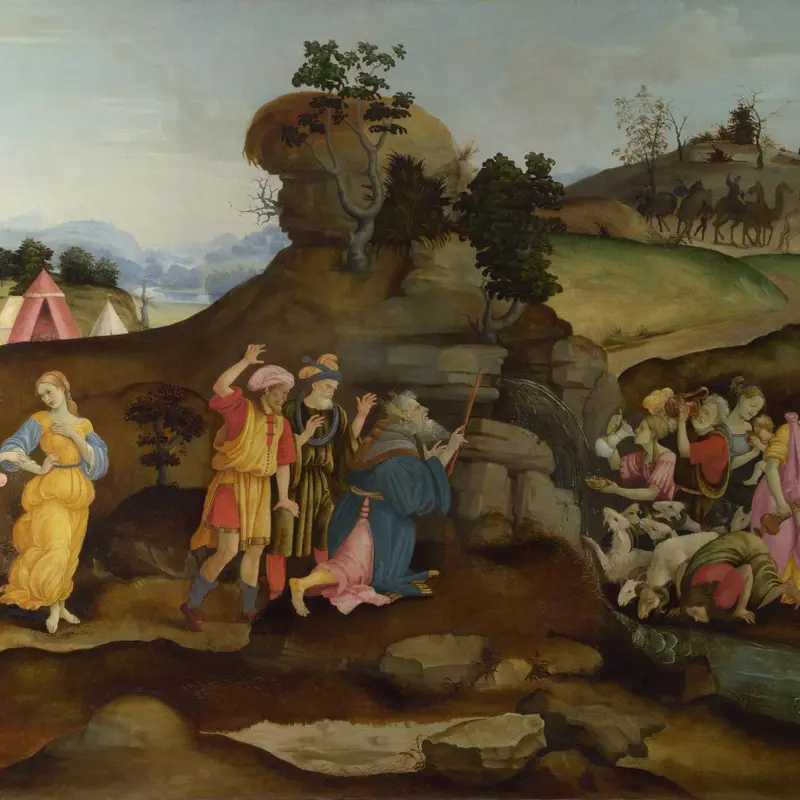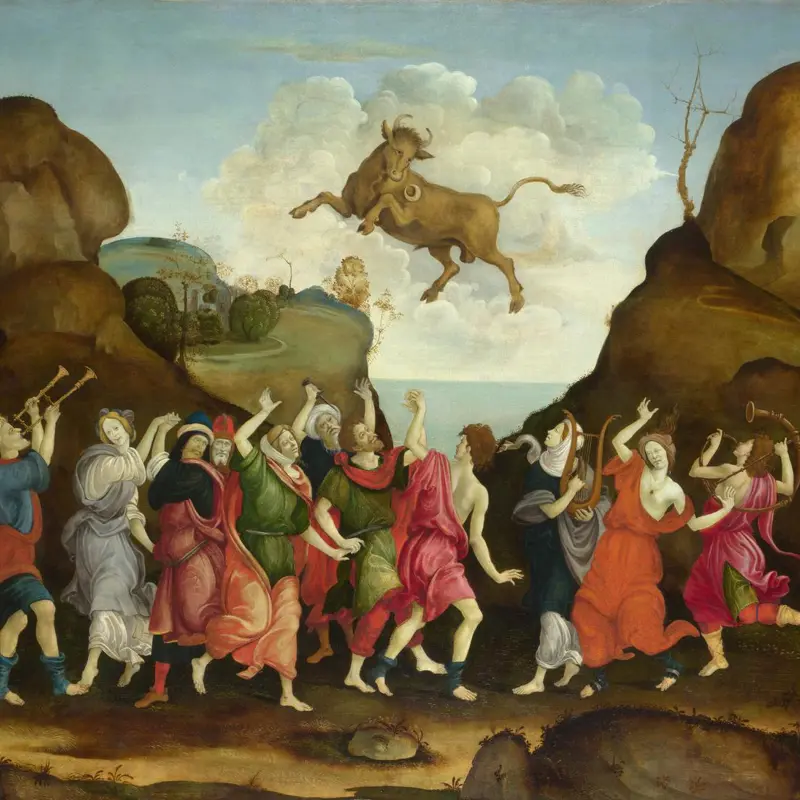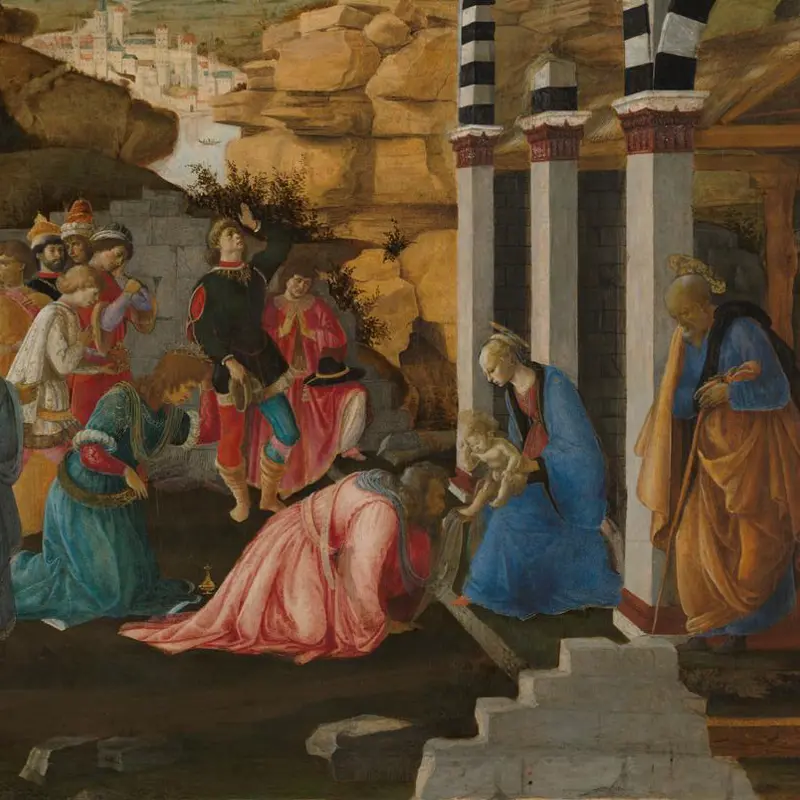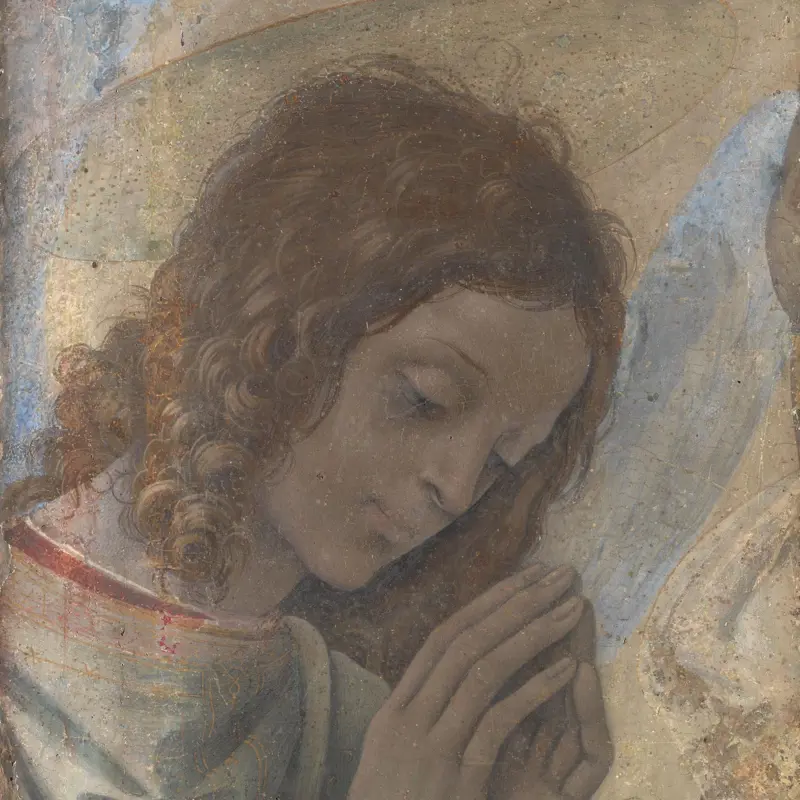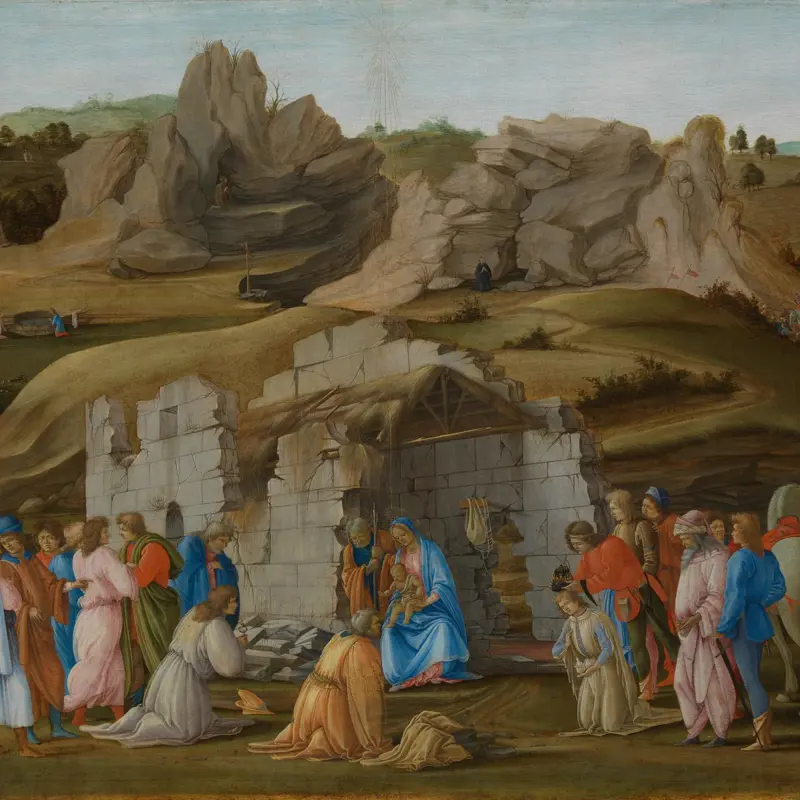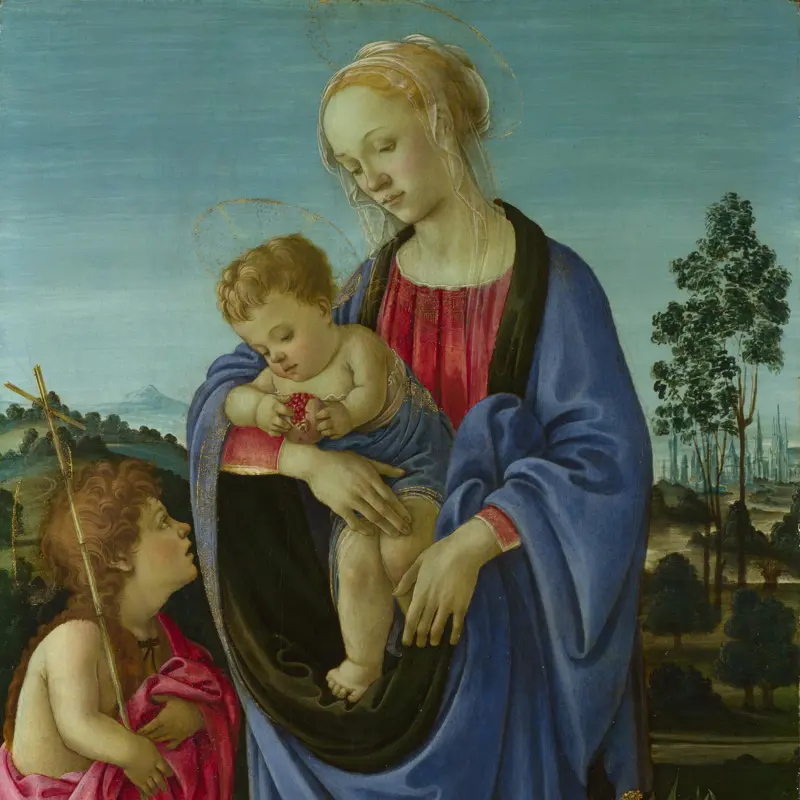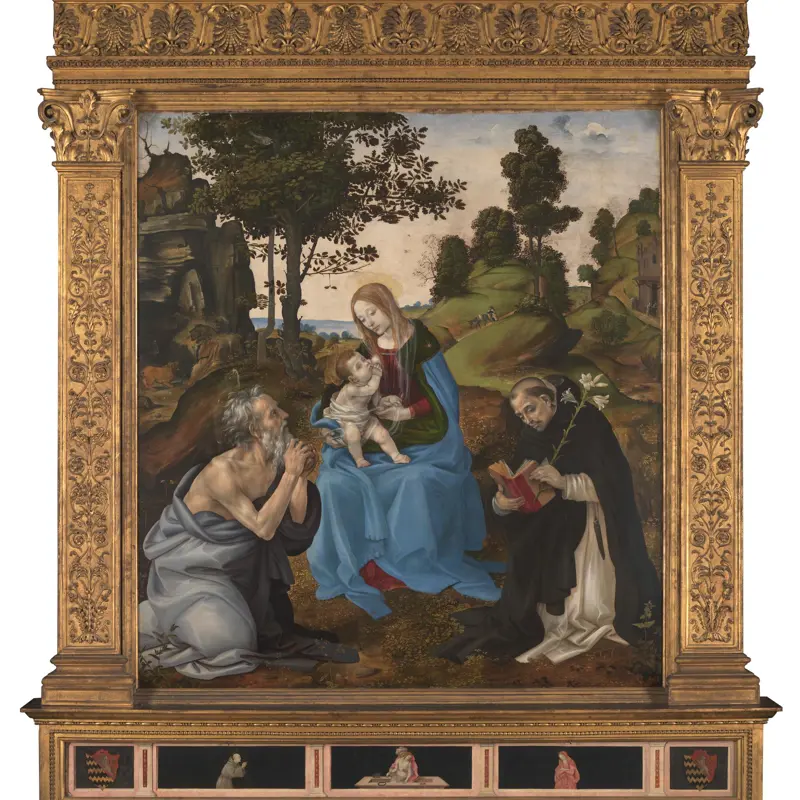Follower of Filippino Lippi, 'The Worship of the Egyptian Bull God, Apis', about 1500
About the work
Overview
This painting is the second of a pair that depicts episodes from the Book of Exodus, which describes how Moses rescued the Israelites from slavery in Egypt and accompanied them into the promised land of Canaan.
Moses had left the Israelites for 40 days and nights, climbing Mount Sinai to receive the Ten Commandments from God. Upon his return, he found his people worshipping a cult image of a golden calf, which he destroyed in anger. The painting depicts the moment immediately beforehand: the golden calf hovers in a cloud above a group of Israelites dancing and playing music.
It has been argued that the golden calf is shown here as the Egyptian bull god Apis, identified by the crescent moon on its shoulder. However, this moon may also allude to the heraldic device of the Strozzi, a Florentine patrician family. Some of them were exiled from Florence, and the Book of Exodus, with its narrative of the Israelites' exile in Egypt, would have resonated with their personal experience.
Key facts
Details
- Full title
- The Worship of the Egyptian Bull God, Apis
- Artist
- Follower of Filippino Lippi
- Artist dates
- about 1457 - 1504
- Part of the series
- Two Scenes from the Story of Moses
- Date made
- about 1500
- Medium and support
- oil on wood
- Dimensions
- 78.1 × 137.2 cm
- Acquisition credit
- Bequeathed by Sir Henry Bernhard Samuelson, Bt, in memory of his father, 1937
- Inventory number
- NG4905
- Location
- Not on display
- Collection
- Main Collection
Provenance
Additional information
Text extracted from the ‘Provenance’ section of the catalogue entry in Martin Davies, ‘National Gallery Catalogues: The Earlier Italian Schools’, London 1986; for further information, see the full catalogue entry.
Bibliography
-
1938National Gallery, National Gallery and Tate Gallery Directors' Reports, 1937, London 1938
-
1951Davies, Martin, National Gallery Catalogues: The Earlier Italian Schools, London 1951
-
1986Davies, Martin, National Gallery Catalogues: The Earlier Italian Schools, revised edn, London 1986
-
2001
C. Baker and T. Henry, The National Gallery: Complete Illustrated Catalogue, London 2001
About this record
If you know more about this work or have spotted an error, please contact us. Please note that exhibition histories are listed from 2009 onwards. Bibliographies may not be complete; more comprehensive information is available in the National Gallery Library.
Images
About the series: Two Scenes from the Story of Moses
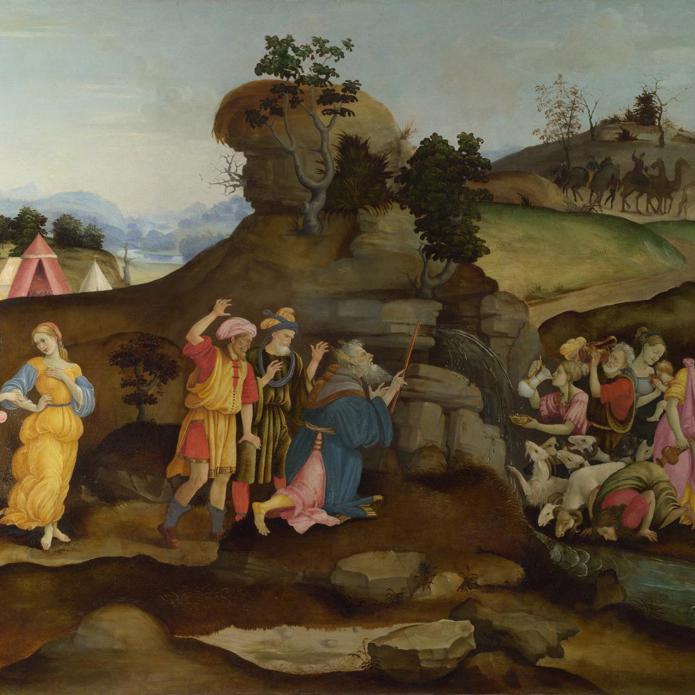
Overview
Moses brings forth Water out of the Rock and The Worship of the Egyptian Bull God, Apis depict episodes from the life of Moses. They are based on the Book of Exodus, which describes how Moses rescued the Israelites from slavery in Egypt and accompanied them into the promised land of Canaan. The first picture shows water gushing from a rock that Moses has struck with his wooden staff; the second shows the Israelites worshipping the golden calf – possibly depicted in the guise of the Egyptian god Apis – in Moses' absence.
The two works were painted by a follower of Filippino Lippi, and their equal dimensions suggest that they belong together. Such horizontal paintings were known as spalliere, and were likely to have been inserted into furniture or wainscoting. They often have a moral message, as The Worship of the Egyptian Bull God, Apis does: on his return from Mount Sinai, Moses famously admonished the Israelites for worshipping a false idol.

